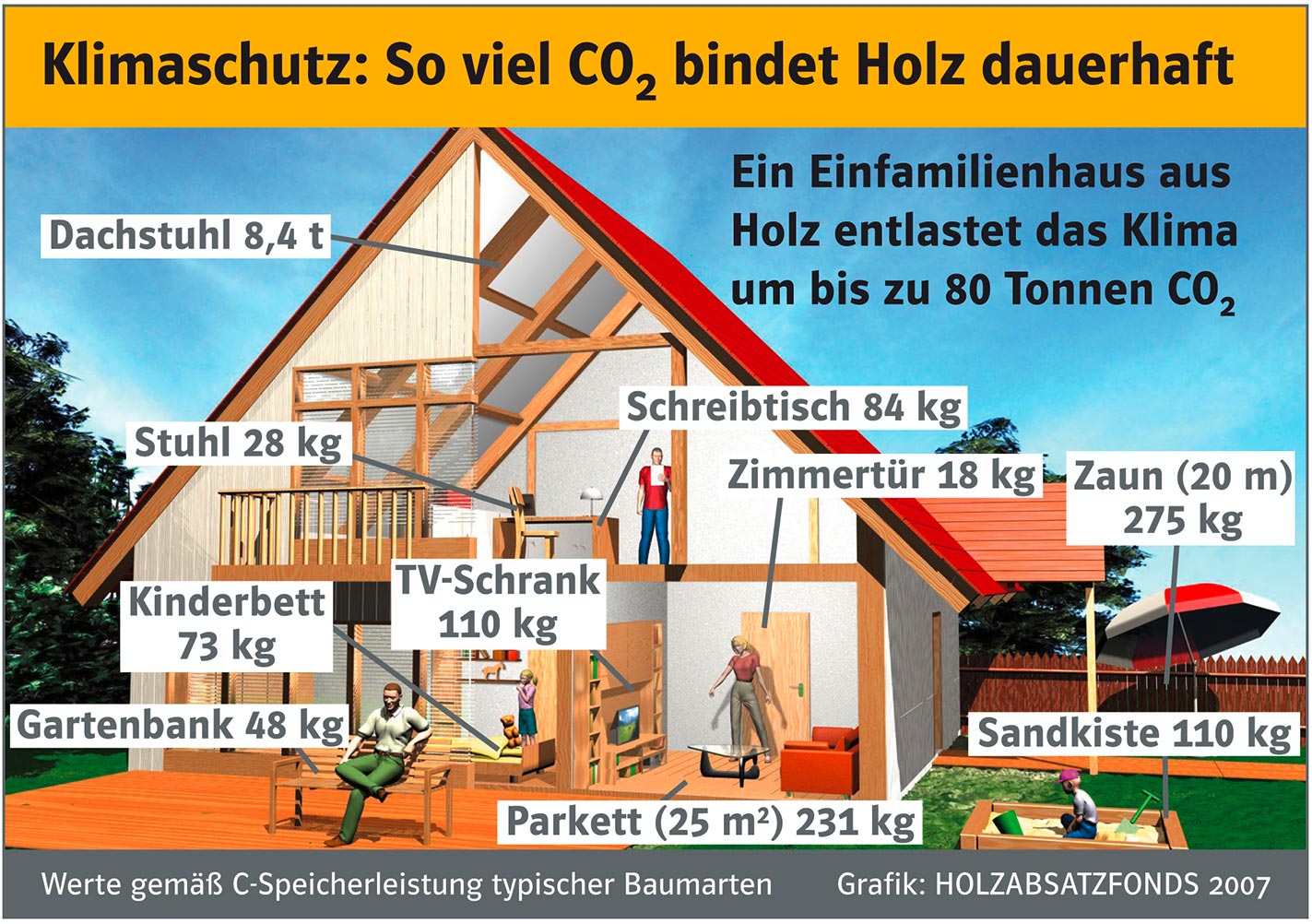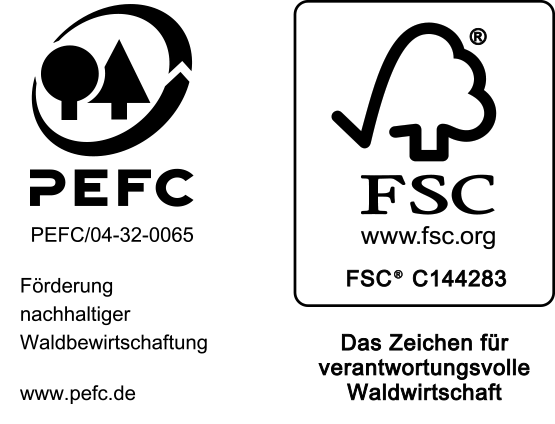For over 300 years, German forestry has worked on this principle:
Only take as much wood from the forest as can regrow.
This “discovery” of the forestry industry is now fundamental to the idea of “sustainability” and is more relevant than ever. Thus, in Germany, much less wood is used than grows each year.
We have put together a list of the most important facts about sustainability:
 1. Over their lifecycle, trees store up carbon dioxide (CO2)
1. Over their lifecycle, trees store up carbon dioxide (CO2)
During photosynthesis, trees extract carbon dioxide from the air and convert it, with energy from the sun and water, into glucose. They need this glucose in order to grow. The carbon dioxide from the air remains trapped in the tree’s tissues until it dies or is burnt. Only then does the carbon recombine with oxygen and enter the atmosphere as carbon dioxide.
2. Wood products extend this storage life
The carbon “trapped” in the tree remains stored up in wood products until they rot or are burnt. Long-lived wood products such as roof trusses, furniture, floors etc. thus relieve the atmosphere for decades and even centuries.
3. Wood products can replace high-emissions materials
Using wood as a construction material or energy supply can replace materials that generate large quantities of CO2 when manufactured, such as steel, plastic or concrete. This is also called the substitution effect.
4. A sustainably managed wood has a better carbon footprint than an unmanaged one.
In their growth phase, trees need a lot of energy and thus store up a lot of carbon in their “best years”. When they die, this carbon dioxide returns to the environment. In an unmanaged forest, therefore, there are phases of decay during which, over the long term, CO2 escape is greater than uptake. If you consider the substitution effect and storage capabilities of wood incorporated in long-lived products, it is clear that the managed woodland is more beneficial to the climate. You can find a recent article about this here (in German only).
5. The use of wood is only climate-friendly in certain circumstances
These include, among others, sustainable forestry, ecologically certified wood (PEFC, FSC), short transport routes, avoiding hazardous substances during processing and cascading use.
6. Cascading use – intelligent and future-proof
Cascading use is a way of sustainably using wood. Logs are first processed into long-lived wood products, then recycled and, after this extensive period of usage, turned into energy.
 7. The sustainable cascading usage of wood. Failing to make use of woodlands leads to increased CO2 emissions.
7. The sustainable cascading usage of wood. Failing to make use of woodlands leads to increased CO2 emissions.
If we do not manage woodlands, too little wood will be available in Germany.
The potential consequences would be:
• Wood imports, potentially from countries which do not ensure sustainable forestry
• Increased manufacture and use of products made of energy-intensive materials such as plastic and steel
• Not having many products that we consider fundamental
Further information:
The association of the German wood industry, Deutsche Säge- und Holzindustrie Bundesverband e.V., offers a lot of information relating to sustainability, hardwood and other topics on the page laubholz.plus
You can find further information on the topic from the Specialist Agency for Renewable Raw Materials (FNR) at its competence and information centre for forests and wood.
Info video:
the following content comes from www.youtube.com. To display the desired content, please click on “load content”. By loading the content, you accept the data protection conditions and T&Cs of the provider.
Our contribution to climate protection
Our own cogeneration plant & electricity generation
All the heat we need in production – including wood drying – is provided by our in-house cogeneration plant.
This natural power plant is fuelled by the leftovers and offcuts from our natural wood. We are capable of achieving 2.4 MW of power here. Together with our solar panels, it also covers around 40% of our electricity requirements and generates no waste.
We make use of everything.
We are PEFC and FSC certified
We are certified by the PEFC and FSC.
These systems contribute to sustainable forestry.
Ask for our certified products.





